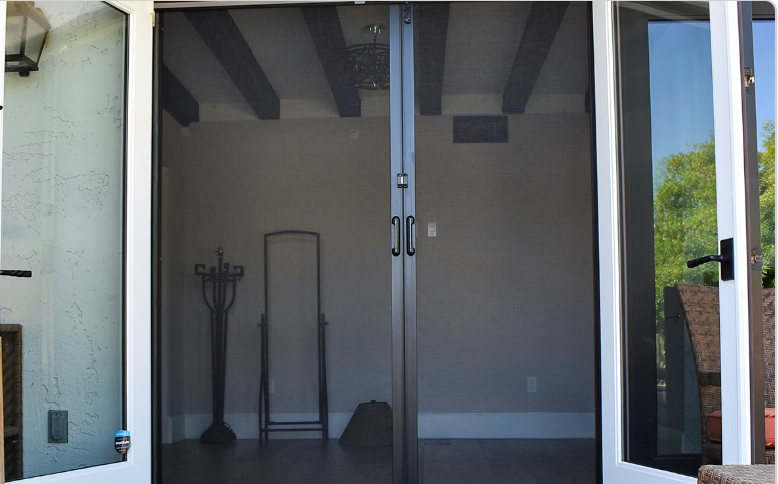Avoid Permit Pitfalls: Door Replacement and HPOZ Approval in L.A.’s Historic Districts
A Homeowner’s Guide to Navigating Permits, Preserving Architectural Integrity, and Choosing the Right Expert for Door Replacement and Repair in Los Angeles HPOZ Districts
Table of Contents
- Introduction
- What is an HPOZ?
- Why Door Replacement in HPOZs Requires More Than a Standard Swap
- The Permit & Review Process for HPOZ Door Projects
- Design & Material Guidelines for Historic Door Replacement
- How Tashman Home Center Helps HPOZ Homeowners
- Checklist — Before You Replace Your Door in an HPOZ
- Conclusion
- FAQs
Introduction
Replacing your front door might seem like a simple upgrade—especially when you want to improve security, energy efficiency or curb‑appeal. But if your home is in one of Los Angeles’ historic zones, a door swap can quickly lead to unexpected delays, permit headaches, or even rejection of the project.
In this article, we’ll walk you through the key things to know when replacing the door on a home located in a Historic Preservation Overlay Zone (HPOZ) in L.A. We’ll explain what an HPOZ is, why door replacement there demands special care, how the permit process works, what design/material guidelines apply, and how Tashman Home Center specialises in helping homeowners in these unique neighbourhoods. The goal is to help you avoid permit pitfalls and get your historic-door project approved.
What is an HPOZ?
A Historic Preservation Overlay Zone (HPOZ) is a zoning overlay established by the city of Los Angeles designed to protect neighbourhoods with architectural or cultural significance. All About HPOZ. If your home lies inside an HPOZ — such as Hancock Park, West Adams, or Jefferson Park — it means any major exterior work (including replacing doors visible from the street) will require review under the district’s Preservation Plan. Historic Jefferson P+1 The purpose is to maintain the visual integrity, historic character, and architectural value of these neighbourhoods.
Why Door Replacement in HPOZs Requires More Than a Standard Swap
In non-HPOZ areas, replacing a door is straightforward. In HPOZs, however, special considerations apply:
- The size, placement, and appearance of the door must match the historic design.
- Materials must be compatible—original wood designs often cannot be replaced with modern aluminum or metal doors.
- Non-conforming upgrades (e.g., oversized glass, security doors) are often denied.
- You must obtain HPOZ review and possibly a Certificate of Appropriateness (COA) before work begins.
Even simple repairs must align with historic standards.
The Permit and Review Process for HPOZ Door Projects
- Check HPOZ Status: Determine if your home is in an HPOZ and if it's a "contributing" structure.
- Gather Documentation: Provide photos, proposed specs, and material details.
- Understand Review Level: Minor changes may qualify as "Conforming Work." Larger changes need a COA.
- Submit Application: Through your HPOZ board or LA’s Department of City Planning.
- Await Review & Approval: This can take weeks or months.
- Secure Building Permit: Only after HPOZ approval.
- Perform the Work: Installation must follow the approved plan precisely.
- Final Inspection: You may need final sign-off.
Pro Tip: Tashman Home Center’s team can handle HPOZ paperwork and ensure materials meet city and neighborhood-specific standards.
Design and Material Guidelines for Historic Door Replacement and Repair
- Keep the original door size and location
- Use historically appropriate materials, like solid wood
- Match original details: paneling, glass panes, and moldings
- Enhance performance discreetly: energy-efficient glass or weather stripping is acceptable if it doesn’t alter the appearance
- Avoid modern elements: oversized glass, metal doors, or frameless options typically don’t meet HPOZ rules
- Align with your home’s architectural style: Spanish Colonial Revival, Craftsman, Tudor, etc.
How Tashman Home Center Helps HPOZ Homeowners
Tashman Home Center is a trusted, city-approved HPOZ vendor specializing in:
- Custom wood doors that replicate historic details
- Historic door repair and restoration using authentic materials
- Expert permit support and drawings for city submission
- Code-compliant installation by experienced professionals
- Energy efficiency and security upgrades that respect historic integrity
Homeowners in Hancock Park, Jefferson Park, West Hollywood, Melrose Hill, and other LA HPOZs rely on Tashman for precision, craftsmanship, and compliance.
Checklist — Before You Replace or Repair Your Door in an HPOZ
✅ Confirm your home’s HPOZ status
✅ Identify if it’s a “contributing” structure
✅ Photograph the current door and surroundings
✅ Retain original size, shape, and design
✅ Use period-appropriate materials (wood, glass, etc.)
✅ Select a vendor experienced with HPOZ rules
✅ Submit paperwork early for approval
✅ Match installation exactly to approved specs
✅ Keep documentation for future resale or repairs
✅ Schedule a final inspection if needed
Conclusion
Replacing or repairing a front door in a Los Angeles HPOZ requires more than picking a new look. It’s about honoring history, protecting your investment, and following city regulations. By working with experts like
Tashman Home Center, you’ll preserve your home’s legacy while enhancing functionality. Contact us via our online form or call our sales team at 323-676-0700 to schedule a free consultation or request a quote.




